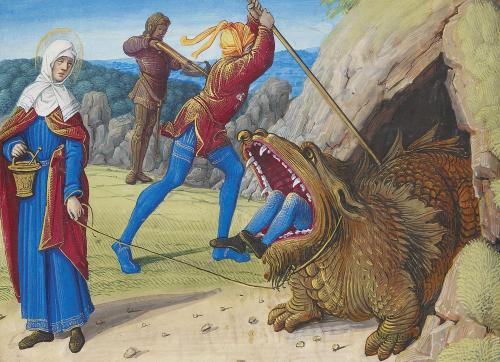
History 102D: Thinking with Monsters: Monsters and Monstrous in Sixteenth- and Seventeenth-Century European Culture
Wednesdays, 1:10 - 4:00 PM
Social Sciences Building 2202
Monsters are good to think with. We tell ourselves stories about zombies, space aliens, and Bigfoot as a way of working through our societal values and anxieties and interrogating the fundamental categories through which we make sense of the world. But the monster stories we tell are not always the same in all times and places – they are historically contingent, changing over time and variable across different cultures and societies. This course examines the monsters imagined by the women and men of sixteenth- and seventeenth-century Europe--the stories of Amazons, giants, cannibals, deformed infants, strange animals, and more--as a way of cracking open early modern European culture to understand it from the inside out. Our readings range from primary sources to recent scholarship. Assignments will include weekly reader response papers as well as a series of short writing assignments, including a primary source analysis and an annotated bibliography, culminating in a term paper that explores aspects of the course topic and questions via a close analysis of an assigned primary source.
Sample readings (full list under development):
Jeffrey Jerome Cohen, “Monster Culture (Seven Theses),” in Monster Theory: Reading Culture (Minneapolis, 1996).
John Mandeville, The Travels of Sir John Mandeville, trans. C.W.R.D. Moseley (New York, 2005).
R. Po-chia Hsia, Trent 1475: Stories of a Ritual Murder Trial (New Haven, 1992).
Surekha Davies, Renaissance Ethnography and the Invention of the Human: New Worlds, Maps and Monsters (Cambridge, 2017).
Karen Harvey, The Imposteress Rabbit Breeder: Mary Toft and Eighteenth-Century England (Oxford, 2020).
Catalina de Erauso, Lieutenant Nun: Memoire of a Basque Transvestite in the New World (Boston, 1996).
Content warning: Historical inquiry often requires us to confront and to engage with topics, beliefs, language, and images that, while acceptable and even common in their day, are offensive today. Our examination of monsters and the monstrous in medieval and early modern European culture will necessarily require us to interact frequently with controversial ideas and materials that are violent in their racism, anti-Semitism, Islamophobia, sexism, homophobia, transphobia, ableism, classism, and more. Our readings (especially our primary source readings), videos, and other materials may use offensive language and/or take positions that are offensive. They may also involve engaging with potentially sensitive topics such as child abuse, animal cruelty, pregnancy and childbirth, and others. I have chosen these materials because they offer a window into the past and are thus particularly relevant to our course’s focus. I will do my best to flag especially graphic or intense content and to make our classroom a space where we can engage thoughtfully and empathetically with difficult content.
Questions? Contact the instructor at akharris@ucdavis.edu